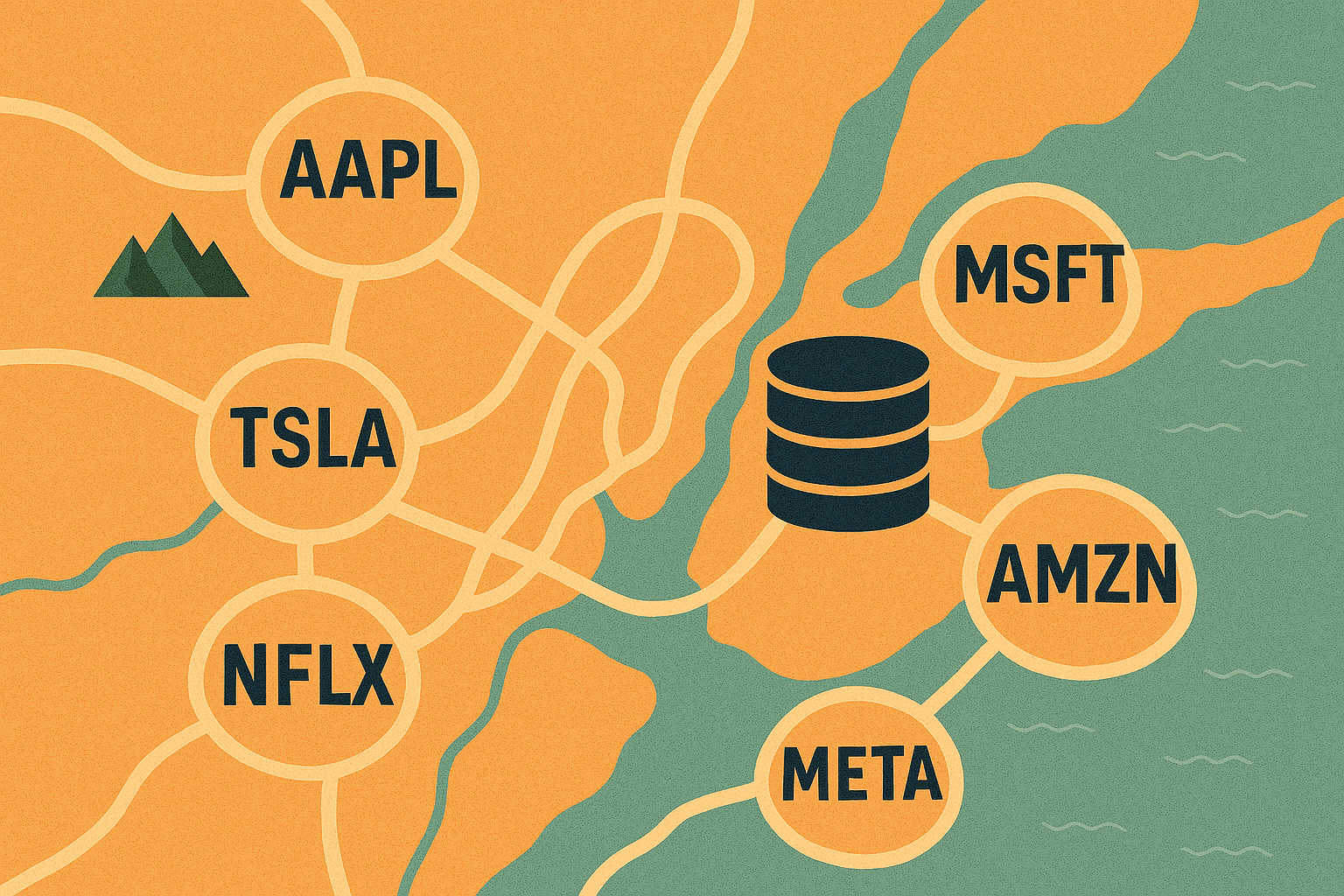The Evolution of Macro Funds and CTAs: A Short Insight into Alternative Data Use
Background
Macro funds and Commodity Trading Advisors (CTAs) have been rapidly evolving, adapting to changes in financial markets, and leveraging new sources of information to gain a competitive edge. In 2022, macro funds have enjoyed some of the best performance metrics as the HFRI 500 Macro Index gained 14.2% for the year. The Citadel Wellington fund is among the top performers along with Brevan Howard, Rokos Capital Management, Haidar Jupiter, and Contrarian Macro Fund.
The use of alternative data by these funds has also grown throughout the years as they feature in our latest buyside surveys. COVID-19, government lockdowns, and supply chain disruption also created a significant challenge to company and economic forecasting models which led to higher demand for inflation, pricing, and supply chain insights.
Alternative data sources, such as satellite imagery, credit card transaction data, and weather data, can provide insights into consumer behavior, economic activity, and other factors impacting global asset prices. For example, satellite imagery can provide insights into crop yields, energy consumption, and retail foot traffic, which can be used to make informed trading decisions in commodity markets. Similarly, social media sentiment analysis can provide real-time insights into public sentiment and consumer behavior.
This article will delve into the evolution of macro and CTA funds, their team structures and workflows, the challenges they face and solutions they’ve found, and case studies of their use of alternative data. To read the full report or to learn more about Eagle Alpha’s thematic content, request access here.
The Evolution of Macro and CTA Funds
The origins of macro and CTA funds can be traced back to the 1960s and 1970s when pioneers like George Soros and Paul Tudor Jones began using macroeconomic analysis and trend-following strategies to generate returns. These early funds focused on trading in currencies, commodities, and interest-rate futures. In the 1980s and 1990s, macro and CTA funds expanded their strategies and asset classes and began trading in equities, fixed income, and options markets, broadening their scope beyond the traditional futures markets.
The 2000s witnessed a rapid increase in the use of technology and quantitative models in macro and CTA funds. Advances in computing power, data availability, and algorithmic trading techniques enabled funds to process vast amounts of data, implement complex trading strategies, and execute trades more efficiently. This led to the rise of systematic and algorithmic trading approaches for macro funds and CTAs. In 2017, it was reported that Tudor Investment Corp. invested in CargoMetrics Technologies, a data analytics company using shipping and satellite data, and Numerai, an AI-run crowdsourced hedge fund.
Team and Workflow
Identifying, hiring, and retaining the right talent is essential for macro and CTA funds. According to Kenneth Tropin, Founder and Chairman of Graham Capital Management, it is important to consider the following factors: 1) PMs track record based on consistent and replicable strategy; 2) a well-defined trading methodology; 3) a detailed and well-constructed view of market dynamics; 4) low correlation of returns to various market indices or instruments.
In early 2015, Bridgewater created a team of programmers that specialized in analytics and artificial intelligence – called the Systematized Intelligence Lab. This lab built a tool to incorporate peer-to-peer ratings into an organized ranking system that shows employees’ strengths and weaknesses. Another app, called “The Contract”, asks staff to set goals they want to achieve and then tracks how well they follow through.
Challenges and Solutions
Alternative data typically comes in various formats, structures, and timeframes, making it challenging to integrate with existing data systems. It may require significant effort to transform and normalize the data for compatibility with internal databases and analytical tools. For example, Acadian’s Director of Stock Selection Research Wesley Chan reported in 2017 how challenging it was to navigate the space as the company hired about two dozen researchers tasked with developing new signals from alternative datasets: “You’re going to have to investigate 90 different things to get 10 that are good. A lot of people who aren’t used to those odds will walk away in disappointment, thinking the whole thing is a failure—it’s going to be a lot of waste.”
In our report, the first steps in alternative data for the buyside, firms’ most common mistakes when implementing a new alternative data strategy are attempting to do it all in-house and over-hiring. Outsourcing is a powerful way to scale up the data initiative. Much of the required technology and infrastructure can be outsourced, as can many of the steps in dataset evaluation.
Alternative data typically comes in various formats, structures, and timeframes, making it challenging to integrate with existing data systems. It may require significant effort to transform and normalize the data for compatibility with internal databases and analytical tools. Outsourcing is a powerful way to scale up the data initiative. Much of the required technology and infrastructure can be outsourced, as can many of the steps in dataset evaluation.
Alternative Data Case Studies
Bridgewater, Winton, Acadian, and Quoniam are some of the funds that have successfully integrated alternative data into their investment strategies. They have used alternative data to understand macro dynamics, map the rollout of fiscal stimulus, and even identify signs of greenwashing in the field of sustainable investing. This section briefly highlights some well-known instances of alternative data use in macro strategies.
Bridgewater, for instance, has found alternative data to be very useful. In 2020, Matt Karasz, a macro research lead at the firm, stated that alternative data is being used more and more as it helps them “understand macro dynamics much more granularly and quickly than traditional government data sources would.” Particularly over the Covid-19 crisis, the company has relied on alternative data to monitor the large shifts in global trends. This includes consumers changing from shopping in brick-and-mortar stores to moving their purchasing online. He stated that alternative data “has been particularly useful as we navigated the uncertainty over the last couple of months.”
Winton, the UK-based CTA, attributes its success to a substantial research and investment management group and implements many strategies across thousands of securities. In 2016, David Harding stated that there were over 100 people on their data team. Winton has used temperature data from the UK’s Hadley Centre, and the annual average of the concentration of atmospheric carbon dioxide as measured by the National Oceanic and Atmospheric Administration monitoring station on Mauna Loa, Hawaii.
Acadian’s Multi-Asset Absolute Return Strategy (MAARS)) employs a return forecasting model that includes more than 300 signals that fall into two categories: macro/cross-asset themes and asset-specific themes. These signals are constructed from alternative datasets and are market-specific. When looking at commodities, for example, the team employs datasets that are useful in predicting supply/demand balances and trade flows, including crack spreads and inventory information as well as sea surface temperatures, frost risk, and pipeline flows.
Quoniam uses data from the Global Database of Events, Language, and Tone (GDELT). It is a research collaboration that parses through global news articles and identifies themes, emotions, locations, and other factors. The firm’s methodology involves filtering the GDELT data, applying a bidirectional LSTM neural network to train on 1,000 articles manually tagged according to industrial production or CPI relevance, and aggregating the results on a monthly basis.
Final Thoughts
In conclusion, the use of alternative data in macro funds and CTAs is not just a trend, but a necessity in today’s fast-paced and data-driven financial markets. By leveraging these new sources of information, these funds can gain a competitive edge and make more informed investment decisions. To read the full report or to learn more about Eagle Alpha’s thematic content, request access here.





